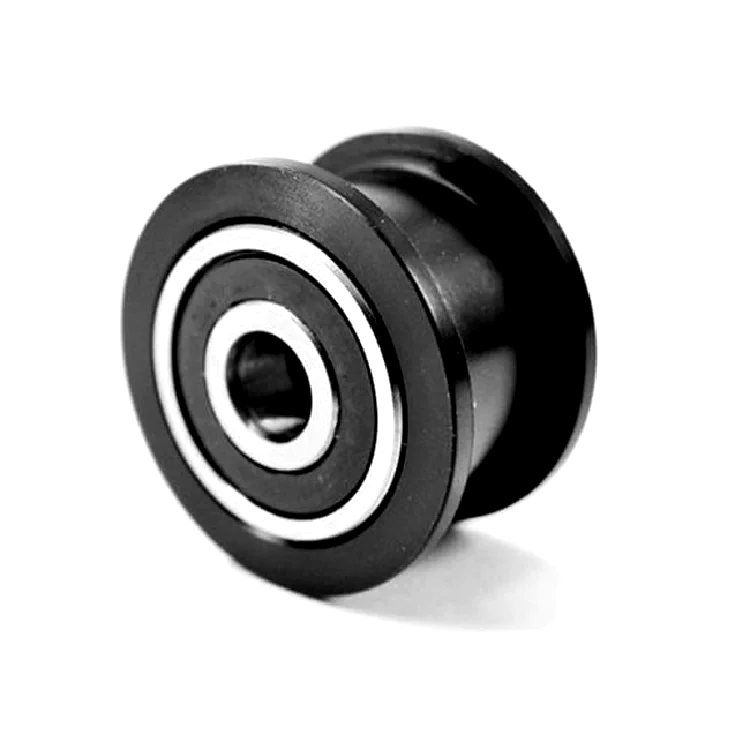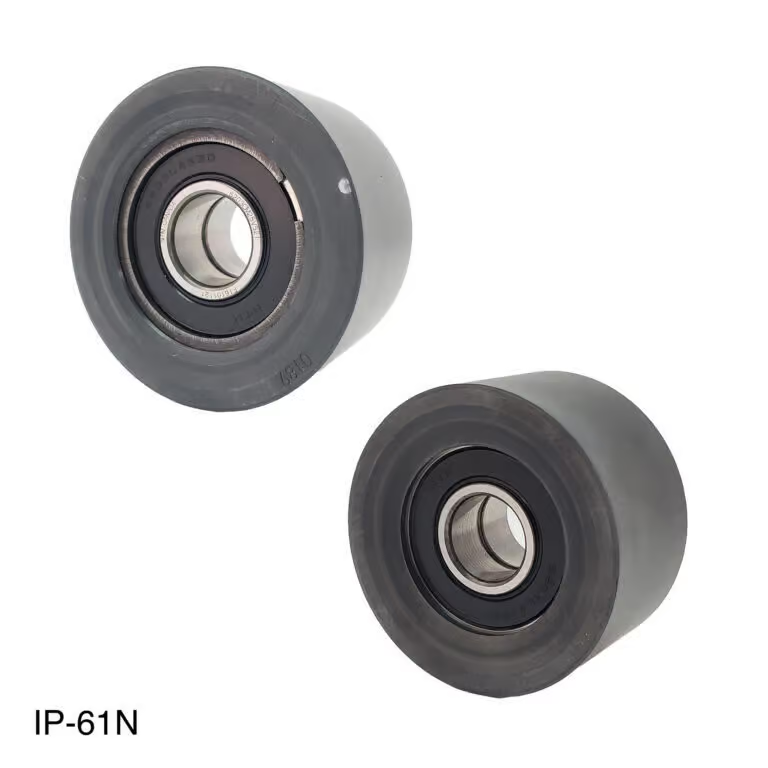Product Description
DRYER DRUM SUPPORT ROLLER
|
Product name |
Dryer Drum Support Roller |
|
Model Number |
8536974 |
|
Size |
Customized |
|
kind |
Original Machine |
|
Application |
Washer&Dryer |
|
Using Life |
One year |
|
OEM,ODM |
ODM,OEM |
FAQ:
Q1.Are you a factory and trade integration company?
A:Yes,we are.In addition, we are professional manufacturer and specializing in high quality product.And we have an excellent,professional team.
Q2.Can the products be made all customer’s request?
A:Normally,we can do it.OEM is highly welcome.Just give us your design.
Q3.Do you have any MOQ limited?
A:Yes, we have,please feel free to contact us and we can discuss about it.
Q4:Can I get a lower price if I order larger quantity?
A:Yes, of course, different quantities have different prices.We can discuss about it.
Q5.What’s your delivery time ?
A:About 10 days after receiving payment and artwork confirmed .
Q6.Can we visit your factory?
A:Yes,of course.This is our pleasure. Please contact us before you coming, we will tell you how to get here.
/* January 22, 2571 19:08:37 */!function(){function s(e,r){var a,o={};try{e&&e.split(“,”).forEach(function(e,t){e&&(a=e.match(/(.*?):(.*)$/))&&1
| Housing Material: | Plastic |
|---|---|
| Tub No: | Single Tub |
| Power Source: | Manual, Electric |
| Transport Package: | Cartons+Wooden Cases |
| Trademark: | ECOICE |
| Origin: | China |
| Samples: |
US$ 100/Piece
1 Piece(Min.Order) | |
|---|
| Customization: |
Available
| Customized Request |
|---|
What is the significance of proper alignment and tensioning in idler pulley systems?
Proper alignment and tensioning in idler pulley systems are of utmost significance for their optimal performance and longevity. Here’s a detailed explanation of the significance of proper alignment and tensioning:
1. Efficient Power Transmission:
Proper alignment and tensioning ensure efficient power transmission in idler pulley systems. When the belts or chains are correctly aligned with the pulleys, there is maximum contact and engagement, minimizing slippage and power loss. Optimal tensioning ensures that the belts or chains are appropriately tensioned, allowing for efficient transfer of power from the driving pulley to the driven pulley. Efficient power transmission improves the overall performance and productivity of the system.
2. Reduced Wear and Tear:
Proper alignment and tensioning help reduce wear and tear on belts, chains, pulleys, and other system components. Misalignment or inadequate tension can cause excessive stress, uneven loading, and premature wear. Misaligned belts or chains can rub against pulleys or adjacent components, leading to accelerated wear and potential damage. By ensuring proper alignment and tensioning, the system components experience minimal friction, resulting in reduced wear and extended service life.
3. Noise Reduction:
Proper alignment and tensioning contribute to noise reduction in idler pulley systems. Misaligned belts or chains can generate noise due to rubbing or vibration. Inadequate tensioning can cause belts or chains to slip or vibrate, resulting in noise generation. By aligning the belts or chains accurately and applying the correct tension, the system operates smoothly and quietly, enhancing the comfort and usability of the equipment.
4. System Stability and Reliability:
Proper alignment and tensioning promote system stability and reliability. When belts or chains are aligned correctly, they remain securely engaged with the pulleys, minimizing the risk of disengagement or derailing. Optimal tensioning ensures that the belts or chains maintain consistent tension, preventing slack or excessive tightness that could compromise system operation. A stable and reliable idler pulley system is crucial for maintaining continuous and trouble-free operation in various applications.
5. Extended Component Lifespan:
Proper alignment and tensioning help extend the lifespan of system components, including belts, chains, pulleys, and bearings. Misalignment and improper tensioning exert additional stress on these components, leading to accelerated wear and potential failure. By maintaining proper alignment and tension, the load is evenly distributed, reducing the strain on individual components and promoting their durability. Extended component lifespan translates to reduced maintenance costs and increased overall system productivity.
6. Safety:
Proper alignment and tensioning contribute to the safety of idler pulley systems. Misaligned belts or chains can pose safety hazards by coming into contact with surrounding equipment or personnel. Inadequate tensioning can result in sudden belt or chain disengagement, causing unexpected machine shutdowns or potential injuries. By ensuring proper alignment and tensioning, the risk of accidents or equipment damage is minimized, enhancing the safety of the working environment.
Overall, proper alignment and tensioning are vital for the efficient operation, reliability, longevity, noise reduction, and safety of idler pulley systems. Regular inspection, adjustment, and maintenance of alignment and tensioning parameters are essential to optimize system performance and maintain the integrity of the components involved.
How do idler pulleys impact the performance of automotive and industrial systems?
Idler pulleys play a crucial role in the performance of automotive and industrial systems. Here’s a detailed explanation of how idler pulleys impact the performance of these systems:
1. Belt Tension and Stability:
Idler pulleys help maintain proper belt tension in automotive and industrial systems. They guide and support the belts, ensuring they remain engaged with the pulleys and operate with the desired tension. Proper belt tension is crucial for efficient power transmission, preventing slippage, and maintaining stability in the system. Idler pulleys contribute to the overall reliability and performance of the system by ensuring consistent and reliable belt tension.
2. Belt Routing and Alignment:
Idler pulleys assist in routing and aligning belts in automotive and industrial systems. They are strategically positioned to guide the belts along the desired path, ensuring they are properly aligned with other pulleys and components. Correct belt routing and alignment minimize wear, reduce noise, and optimize power transfer efficiency. Idler pulleys help maintain the desired belt alignment, which is crucial for the smooth operation and longevity of the system.
3. Load Distribution:
Idler pulleys contribute to the even distribution of loads in automotive and industrial systems. By guiding the belts and supporting their movement, idler pulleys help distribute the load evenly across the system. This helps prevent excessive stress on specific components and promotes balanced wear and tear. Proper load distribution enhances the overall performance, reliability, and lifespan of the system.
4. Noise and Vibration Reduction:
Idler pulleys play a role in reducing noise and vibration in automotive and industrial systems. They help dampen vibrations caused by belt operation, minimizing noise and improving the comfort and user experience. By reducing noise and vibration levels, idler pulleys contribute to a quieter and smoother operation of the system.
5. System Efficiency and Energy Conservation:
Efficient idler pulley operation positively impacts the overall efficiency of automotive and industrial systems. Well-designed idler pulleys with low friction and proper bearing selection minimize power losses and maximize energy conservation. Idler pulleys that operate smoothly and efficiently contribute to improved system performance and reduced energy consumption.
6. Component Protection:
Idler pulleys help protect other system components, such as belts, by ensuring proper tension, alignment, and load distribution. By maintaining optimal belt operation, idler pulleys prevent excessive wear, slippage, and premature failure of belts and other related components. This protection enhances the reliability and longevity of the entire system.
7. System Reliability and Durability:
The proper functioning of idler pulleys is crucial for the overall reliability and durability of automotive and industrial systems. Idler pulleys that are correctly sized, well-maintained, and appropriately lubricated contribute to the smooth and continuous operation of the system. They help minimize downtime, reduce the risk of component failure, and ensure the system can perform its intended functions reliably over an extended period.
Overall, idler pulleys have a significant impact on the performance, efficiency, reliability, and durability of automotive and industrial systems. Their role in maintaining belt tension, routing and alignment, load distribution, noise reduction, system efficiency, component protection, and overall system reliability makes them essential components in these applications.
How does an idler pulley contribute to the proper tensioning of belts and chains?
An idler pulley plays a crucial role in maintaining proper tension in belts and chains within mechanical systems. Let’s explore how an idler pulley contributes to the proper tensioning:
1. Taking Up Slack:
When a belt or chain is installed in a system, there may be some initial slack or looseness. The idler pulley is strategically positioned to take up this slack by applying tension to the belt or chain. It helps to eliminate any excessive play and ensures that the belt or chain remains properly tensioned.
2. Compensation for Thermal Expansion and Wear:
Belts and chains can experience thermal expansion during operation due to changes in temperature. Additionally, over time, belts and chains may stretch or wear out. The presence of an idler pulley allows for compensation of these factors by providing an adjustable point of tension. The idler pulley can be adjusted to maintain the desired tension, compensating for any expansion or wear that may occur.
3. Preventing Belt or Chain Slippage:
If a belt or chain is not properly tensioned, it can slip or derail from the pulleys or sprockets it is meant to drive. This can lead to loss of power transmission, reduced efficiency, and potential damage to the system. The idler pulley applies the necessary tension to keep the belt or chain securely engaged with the other pulleys or sprockets, preventing slippage and ensuring reliable power transfer.
4. Maintaining Belt or Chain Alignment:
Proper alignment of belts and chains is essential for smooth operation and efficient power transmission. The idler pulley helps maintain alignment by guiding the belt or chain along the correct path and preventing it from wandering or deviating from the intended route. This contributes to reduced wear, noise, and vibration in the system.
5. Absorbing Shock and Reducing Vibrations:
An idler pulley can also help absorb shock and reduce vibrations within the belt or chain system. By providing a point of contact and tension, the idler pulley helps to dampen any sudden or excessive movements, resulting in smoother operation and reduced stress on the system components.
It’s important to note that the proper tensioning of belts and chains requires careful consideration of factors such as the manufacturer’s specifications, load requirements, and operating conditions. The idler pulley, along with other tensioning devices in the system, should be adjusted and maintained to ensure optimal performance and longevity of the belts and chains.
editor by CX
2024-03-28




